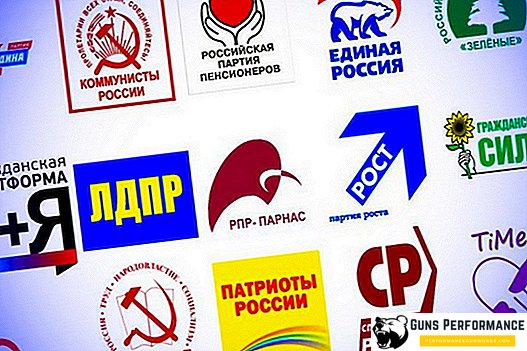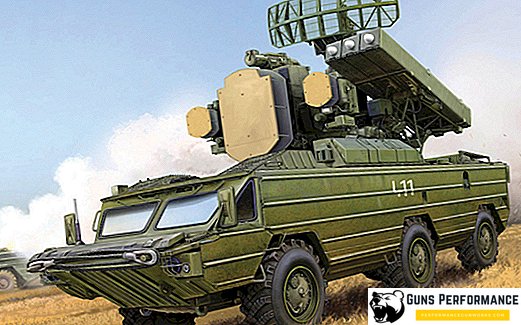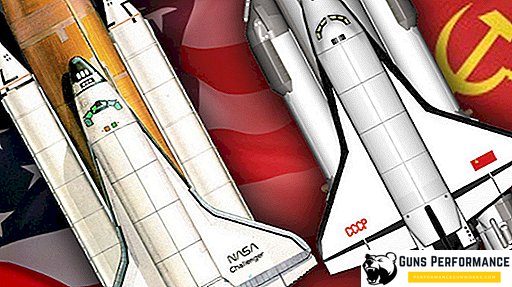In our country there is an opinion that an ordinary person can change nothing in politics. And this, without a doubt, is so - alone in this field is really not a warrior. The subjects of the political life of the state are always only associations of citizens: public organizations, various movements and parties with a certain ideology, goals and a clear understanding of how to achieve them. From a scientific point of view, it is the parties that have the greatest value in the structure of the modern state. We decipher the very concept of a political party.
A political party is a certain group of people united by a common set of ideas and setting itself the task of implementing them by coming to power in the country or delegating their representatives to government bodies or the state apparatus. These parties are different from trade unions, which, although they are engaged in political activities, but put social protection of workers at the forefront. As a rule, a lot of parties are represented in the state system of a country and there is competition between them. The program of a political party is the quintessence of its ideology, goals and objectives, as well as ways to achieve them. Parties seek to constantly increase their electoral base, they belong to non-profit organizations.
To defend their interests, citizens who share the same political, economic, social, class, national, cultural, religious views and ideals are usually united.

Political parties do not enjoy the confidence of a significant part of Russians. Recent public opinion polls clearly show that citizens of our country do not see them as representatives of their interests. Russians completely admit a one-party system or they believe that it is generally possible to do without this institution. Such ideas are not something out of the ordinary - they are typical for countries where the democratic system has just begun to develop. For a better understanding of this issue, the goals and functions of political parties should be considered.
What are political parties for?
The role of political parties in the life of the state is enormous: through this institution, people with new ideas who find support in society get to power. However, party functions are not limited to this. They are divided into external and internal. The latter include:
- seeking and securing sufficient funding;
- recruit new members;
- establishing effective interaction between various political forces, for example, the central office and regional offices.

But for the state system, external functions are more important:
- expression and protection of interests of certain social groups and segments of the population;
- association of citizens on the basis of common goals and their mobilization to solve social or other tasks;
- the creation of ideology, the formation of the necessary public opinion;
- training personnel reserve for state institutions, raising the country's political elite;
- organization of election campaigns and participation in them;
- the struggle for the possession of state power.
Naturally, the last goal on the list is considered the main one; all others are to some extent the tools for achieving it.
The main signs of political parties
What is called a political party? How is it different from other civil associations? What are the similarities of different types of political parties?
A political party should have the following attributes:
- Functioning on a long-term basis, a clear internal structure, articulated rules and formal norms, which are usually reflected in its charter;
- The presence of a network of primary cells - regional offices - on an ongoing basis liaising with the central management;
- Aiming at winning and retaining political power in the country;
- Broad public support and voluntary membership;
- The existence of ideology, strategies and goals, which are expressed in a political program.
History of democracy or how political parties developed
Currently parties exist in almost all countries of the world. This word has become widely used in England of the XIV century.
The term "party" was known in the period of Antiquity, it is derived from the Latin word pars, which means "part". However, parties in the modern sense appeared only at the end of the XVIII - beginning of the XIX century, in the period of formation of parliamentarism.
The formation of political parties began in ancient Greece. Aristotle wrote about the confrontation in Athens between the parties of the people and the nobility. These were unformed groups, not numerous and not distinguished by a long duration of existence. They expressed the interests of certain social groups and had no ideology. These "proto-parties" did not have a clear organizational structure. A similar situation was observed in the Roman Empire. For example, there existed a party of popularists, flirting with the poorest strata of the population, and optimates, who represented the patrician class.
The direct predecessors of the existing political forces can be called the English Tories and the Whigs — court groups representing the top of society: the big bourgeoisie and the aristocracy. They formed around situational leaders and fought for influence at the royal court.
In political science there are many theories explaining the phenomenon of political parties. Some scientists believe that they arose because of the eternal human desire to compete for power, other researchers believe that parties are necessary for pooling resources in order to represent common group interests, others see the reason in the social-class structure of society that determines the struggle for power in society.
The emergence of the modern party system is associated with the emergence of civil society in Western countries, the strengthening of the third estate, and democratization. Its main prerequisites are the differentiation of society, the complication of its structure and the formation of new active actors wishing to participate in the political life of the state. The party arose as a result of the destruction of traditional forms of power, after the European stopped believing in its sacredness and uniqueness of the ruling one. In the Old World, the first parties were clearly bourgeois in nature, in many ways their activity was directed against the remnants of the feudal system.

The history of political parties of the modern type began at the end of the XVIII century. The Great French Revolution, the proclamation of US independence, the formation of national states in Europe unrecognizable changed the Western world and led to the creation of the first ideological parties. They differed clear organizational structures and attributed themselves to one or another political direction.
Active party building in the USA and Europe is primarily caused by the rapid development of parliamentarism and the introduction of universal suffrage.
The famous German historian, philosopher and sociologist Weber identified three main stages of the formation of parties:
- aristocratic groups;
- political clubs;
- modern mass parties.
Obviously, the first two stages relate to the history of these organizations.
Already in the thirties of the XIX century, the main political parties of Great Britain (conservatives, Labor) and the USA (Republicans and Democrats) emerge.
The political forces of the XIX century were significantly different from their modern counterparts - they still largely remained small aristocratic clubs of previous centuries. They acted mainly in parliament, and outside its walls were limited to election campaigns and had practically no regional offices. As such, there was no principle of membership.
The emergence and rapid growth of the labor movement, observed in the second half of the 19th century, became a powerful stimulus for the further evolution of the party system. It was the proletariat that turned the parties from closed elite associations into thousands of mass movements with a powerful network of regional branches, with regular congresses, a clear program, membership dues, a charter and a clear ideology.
The end of the XIX century is the period of the division of parties according to a class basis. Some of them came to the defense of large owners and the bourgeoisie, and the other - began zealously to defend social justice.

Around the middle of the 20th century, a new type of political party began to emerge - "nationwide." They did not work with any single social stratum, but tried to enlist the support of the whole society. Western political analysts call such associations "parties for all." Pretty quickly, this model was adopted by almost all political forces, including those that had previously defended only narrow group interests.
But this term should not be understood too literally: all the same, each party has its own electoral niche, and it cannot defend the interests of all citizens in government bodies. It is just that the "national" parties build their program and real activity, based on consideration of the interests of various groups, hoping to get the maximum support of the society.
The origin of the party movement in Russia
In our country, the first batches appeared at the end of the XIX century. They formed three main directions: monarchical (right), revolutionary (left) and liberal, belonging to the central part of the political spectrum. The formation of the Russian party system took place in very specific conditions: on the outskirts of a huge empire, the creation of local left-wing political parties began, which defended not only the principles of social justice, but also fought against national oppression. Monarchist political forces appeared a little later, their branches were mainly concentrated in the central regions of Russia.
Of the revolutionary political forces, the RSDLP (founded in 1898) and the Social Revolutionary Party (1902) were the most active, their activity was illegal. They were distinguished by an irreconcilable stance towards the existing system, they called on the society for an armed struggle against the authorities, carried out terrorist acts and committed political assassinations. Both the SRs and members of the RSDLP took an active part in the revolutionary events of 1905.

The most influential and massive legal political forces of Tsarist Russia were the Cadets (Constitutional Democratic Party) and Octobrists (the Union of October 17).
The Cadets were typical liberal centrists, they advocated a gradual and non-violent way of transforming the country, and their future was seen in the transition to a constitutional monarchy and the strengthening of local self-government. The members of this political force were the color of the Russian intelligentsia: prominent economists, world-famous scientists, famous publicists, representatives of the aristocracy. He headed the cadets Pavel Milyukov.
Octobrists were carriers of several other ideas, they can be attributed to the center-right. They were also supporters of a constitutional monarchy, but at the same time they emphasized the preservation of a strong imperial power, supported landowner land ownership, wanted to equalize the rights and obligations of the peasants with other estates. The leader of the Octobrists was Alexander Guchkov.
A separate group in the political system of tsarist Russia was the Black-Hundred organizations, the first of which ("The Russian Assembly") appeared in 1900. The Black Hundreds called for supporting Slavic culture, strengthening the monarchy, strengthening the role of the Orthodox Church in society, and promoting the Russian language on the outskirts of the empire. The structure of such movements included representatives of bureaucracy, aristocracy, officers, creative intelligentsia. The Black-Hundred organizations were distinguished by a high level of anti-Semitism, they are not without reason considered the main instigators and organizers of the Jewish pogroms.
Existing classifications of political forces
The differences of political parties are significant, and in order to better understand this diversity several types of their classifications have been created:
- By location in the ideological spectrum. In accordance with this feature distinguish communist, conservative, liberal and other parties;
- On a territorial basis. Political forces may be regional, federal, represent any region, and so on;
- On the social base. There are parties that protect the interests of peasants, workers, small businesses, etc .;
- In relation to the government: opposition and pro-government, as well as legal and illegal, parliamentary and non-parliamentary.
The most well-known classification of political parties is based on differences in the organizational structure, according to which mass and personnel parties are distinguished.
Personnel parties are mainly composed of professional politicians, members of parliament. They are united around a head or a small group of leaders. Political forces of this type, as a rule, are elitist and few, financed by private sources. The main activity takes place during the election period.
Mass parties have a significant number of members and are funded from contributions. These are centralized organizations that carry out extensive propaganda work on the ground and strive for a steady increase in their supporters. Having such a party structure, they are capable of constant vigorous activity.
Parties can be created from above, that is, by the will of one leader (or a group of politicians) or a statesman for certain goals or projects. An example is almost all Russian parties. The initiator of the creation of political power can be a massive social movement. In addition, new batches may appear by splitting or merging.
Systems of various states of the world
Today in the world there are several types of political systems regarding the number of parties.
The most rare and exotic is the non-partisan system, mostly it exists in countries with absolute monarchy. Parties can be either prohibited by the law altogether, or simply there are no prerequisites for their creation. With such a system, each candidate to the authorities participates in the elections independently.
With a one-party system, only one political force is allowed in the country, as a rule, this situation is fixed at the legislative level. A typical example is the USSR and Hitler's Germany.
There is a system with a single ruling party, in which other political forces are not prohibited. In this case, there is no opposition, but the hegemon party constantly participates in full-fledged elections, thanks to which it updates its personnel structure, changes the program, offers new ideas to the society. A classic example of such a system is modern Japan with its ruling Liberal Democratic Party.

The most well-known state with a two-party political system is the United States of America. In this model, there are two dominant parties, although the rest of the political forces no one prohibits. Most often, the main pair consists of left and right parties that replace each other in elections. In the US, Democrats work closely with trade unions, expressing the interests of workers, the middle class, national and religious minorities. The main Republican voters are farmers, businessmen, military, intellectuals. With a two-party system, the winner gets the full state power.
The most widespread in the modern world is a multiparty system, when several different parties compete for power with a real chance of winning. In the electoral system of Western countries, the barrier is quite low, which allows even small parties to enter the parliament. Then several political forces, each of which does not have a majority, create a ruling coalition that assumes responsibility for governing the country. The cost of such a system is the instability of the entire political structure, leading to periodic parliamentary crises, which usually lead to re-election.
В разных государствах существуют свои особенности политической системы, обусловленные историческими обстоятельствами или традициями. Так, например, в Финляндии на протяжении многих лет существует три сильные партии, которые периодически сменяют друг друга на властном Олимпе. В Британии и Канаде есть две доминирующие партии и одна сильная. Последняя может получить значительное число мест в парламенте, но обычно она не возглавляет правительство.
Традиционные цвета политических сил
Исторически сложилось, что партии разной части политического спектра ассоциируют себя с тем или иным цветом. Коммунисты и социалисты носят красный, консерваторы - черный или синий, желтый - это традиционный цвет либеральных партий. Черный обычно связывают с анархистами, а коричневый используют в своей символике представители националистических движений.

В этих правилах есть и исключения. Например, партийный цвет американских консерваторов-республиканцев красный, а левых демократов - синий.
Партийные цвета особенно важны во время избирательной кампании, они активно используются в агитационных материалах и символике.
Как финансируются политические силы?
Партии - это внушительные организации, в состав которых иногда входят миллионы членов. Их деятельность требует значительных материальных затрат: на содержание региональных штабов и центрального аппарата, создание агитационных материалов, проведение съездов и др.
Любая партия финансируется своими членами. Это могут быть как значительные вклады зажиточных партийцев, так и небольшие взносы рядовых членов организации, обычно не превышающие нескольких процентов от регулярного дохода. Финансирование - очень щепетильный вопрос, напрямую связанный с таким явлением, как политическая коррупция. Крупный бизнес нередко выделяет немаленькие суммы на партийные нужды, но взамен требует после прихода политической силы к власти решения тех или иных вопросов.
В США лоббирование узаконено, причем как на региональном, так и на федеральном уровне. Приняты законы, регулирующие эту деятельность в Конгрессе.
Частично партии могут финансироваться и государством - такая практика существует во многих странах мира, включая Россию. У нас партия может получить деньги из бюджета, добившись определенного результата на выборах.
В большинстве государств установлен запрет на финансирование политических партий из-за рубежа.
Партийная система современной России
"Демократически избираемая и сменяемая авторитарная власть - в такую форму на сегодняшний день отлилось развитие посткоммунистического политического режима".
Герман Дилигенский о политическом режиме в современной России
В нашей стране партийная система начала складываться только в 90-х годах, после крушения Советского Союза и обретения независимости. Сейчас она находится на ранней стадии своего развития: более семидесяти лет существовала одна партия, которая руководила страной, а те, кто протестовал против подобной практики, обычно плохо заканчивали. Конституцией РФ признается политическое разнообразие и запрещается использование какой-то одной идеологии в качестве государственной. В нашей стране функционирует многопартийная система, политические партии современной России представляют все части спектра.
Основным юридическим документом, регулирующим партийную деятельность, является Федеральный закон (ФЗ) "О политических партиях". Согласно нему, партией признается "объединение, созданное с целью участия граждан РФ в ее политической жизни… ".
В настоящий момент (начало 2018 года) в РФ существует 67 официально зарегистрированных политических сил. При этом политическая партия "Единая Россия" уже многие годы занимает доминирующее положение. Еще сто субъектов находятся в процессе получения регистрации, их полный список, включая адреса и телефоны, можно найти на сайте Минюста.
Статья 3 федерального закона определяет, что партии необходимо иметь региональные отделения минимум в половине субъектов РФ, в ее состав обязаны входить не менее 500 членов, а руководящие и иные структурные подразделения должны находиться исключительно на территории нашей страны. Существующее законодательство запрещает партийные блоки.
У партий есть право выдвигать кандидатов на любые выборные должности и составлять списки при проведении выборов в Госдуму. Однако прежде чем участвовать в избирательном процессе политическая сила обязана пройти федеральную регистрацию в Министерстве юстиции, а затем отдельно сделать то же самое в каждом из регионов РФ. Как показывает практика, выполнить это не всегда просто: "Партия прогресса" - политический проект Алексея Навального - была недопущена к кампании именно на этапе местных регистраций.

К выборам в Государственную думу как по спискам, так и по одномандатным округам допускаются только те силы, которые получили не менее 3% на предыдущих парламентских выборах или имеющие хотя бы одного местного депутата. Всем остальным приходится собирать подписи.
Следует отметить, что избирательное и "партийное" законодательство в России часто меняется. В 2012 году условия регистрации политических сил были демократизированы, результатом чего стало увеличение их количества в более чем семь раз. Власти пошли на такое послабление после решения Европейского суда по делу РПР и массовых акций протеста, которые всколыхнули Россию в 2011-2012 годах. В настоящее время в Федеральном парламенте представлены шесть партий, четыре из них имеют собственные фракции. Доминирующее положение занимает политическая партия "Единая Россия" - у нее 343 депутата.
Особенностью российской партийной системы является практически полное отсутствие у большинства сил идейно-ценностной базы, определяющей их место в политическом спектре. Подобный феномен - это результат молодости российской системы и дезориентированного состояния самого общества, которое желает соединить несовместимые вещи: высокий уровень социального обеспечения с низкими налогами и "рыночными" свободами для бизнеса.
"Партийный век" в нашей стране, как правило, недолог. Десятки политических сил, которые были настоящими "звездами" 90-х годов, уже давно не принимают серьезного участия в политической деятельности или превратились в откровенных маргиналов. Партии в России создаются в основном под определенного политика, поэтому они сильно зависят от его успеха и личной харизмы. Ни профсоюзы, ни предприниматели так и не смогли создать мощной и устойчивой политической силы.
Большинство существующих партий могут только мечтать о преодолении 5% барьера и попадании в парламент. Партии, которые находятся у власти, также практически лишены возможности реально влиять на принятие государственных решений и, скорее, являются обслугой и защитниками крупного капитала и собственных корпоративных интересов.
После обретения независимости Россия получила государственные и политические институты, характерные для большинства демократических стран мира, в том числе и партийную систему. Но выборы, превратившись в форму борьбы за власть, так и не стали для общества эффективным инструментом обновления правящей элиты, а тем более средством контроля над ней. Избирательный процесс из соревнования идеологий и концепций развития страны превратился в ярмарку популизма, а его исход определяют финансовые и правовые ресурсы финансово-промышленных групп, стоящих за кандидатами, или же степенью поддержки их государством.
Западные политологи называют такой режим "демократурой", подразумевая под этим термином ситуацию, когда демократические институты уже есть, а народ на политические процессы в государстве практически не влияет. Основные политические партии нашей страны формировались в условиях отсутствия главных институтов гражданского общества, что и привело к имеющимся результатам.












